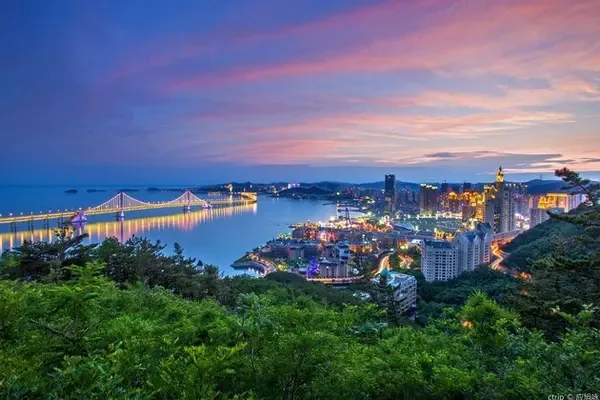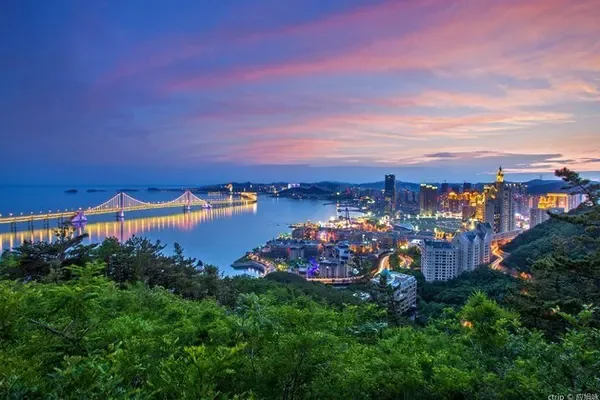If you don't reach Mangya, you don't count as going to the northwest
"If you haven't been to Kashgar, you haven't been to Xinjiang, if you haven't been to Ngari, you haven't been to Tibet, and if you haven't been to Mangya, you haven't been to the Northwest."
In the field of travel photography, there has always been such a famous saying. Kashgar is an ancient city in southern Xinjiang, where Xinjiang’s delicacies, ethnic cultures, and architectural styles are condensed; Ngari brings together the most breathtaking plateau beauty in the depths of Tibet; then, what can Mangya represent in the Northwest?

The Loneliest City in China, Qinghai Mangya
There are four major uninhabited areas in China, namely Qiangtang, Altun, Lop Nur, and Hoh Xil. Mangya City is located in the hinterland of the other three uninhabited areas besides Qiangtang. The nearest city to Mangya is Dunhuang City, Gansu Province, 389 kilometers away from Mangya, and it takes 5 hours to drive.

Mangya is known as the loneliest city in China, even lonelier than Sansha, Hainan, the southernmost city in China. The resident population of Mangya City is only 60,000. Apart from the ancient wasteland and endless wind and sand, there is only the eternal dark night and the splendid galaxy. A G315 Mars Highway connects Qinghai Mangya to Xinjiang Ruoqiang; another G215 National Highway leads from Mangya to the nearest Dunhuang City, Gansu. On both sides of the highway, there will always be only the fiery desert and the lost Yadan landform of the Devil City.

Cliff, lonely but alluring
There are two major scenic spots around Mangya, which can be called natural miracles in no man's land - Devil's Eye Aiken Spring and Mangya Emerald Lake.
Emerald Lake is 23 kilometers away from Mangya Huatugou, with the Kunlun Mountains in the south and the Altun Mountains in the north. "A piece of pure liquid emerald", thousands of tourists describe this beautiful and rich salt lake after leaving their footprints here.

Devil's Eye Aiken Spring is like an eye embedded in the ground. The diameter of the spring is more than 10 meters, and it keeps gushing, forming colorful ring-shaped sediments around it. There is no detailed scientific research result about the specific cause, flow and chemical composition of Aiken Spring. Its life experience is a lonely mystery just like Mangya City under the veil of mystery.

Mangya self-driving tour route planning
Self-driving Mangya, the best self-driving tour route is to take the Northwest Great Ring Road to complete a trip to conquer Qinghai and Gansu in the Northwest. Depart from Xining, pass Qinghai Lake, Delingha, Dachaidan, visit Dongtai Jinel Lake, Shuishang Yadan and other places, and arrive at Mangya. After seeing Mangya Emerald Lake and Devil's Eye Aiken Spring, return to Xining along Dunhuang, Jiayuguan, Zhangye and other places.

Passing attractions: Qinghai Lake, Chaka Salt Lake, Hoh Xil, Kunlun Mountains, G315 Internet celebrity U-shaped highway, Dongtai Jinel Lake, Water Yadan, Mangya Emerald Lake, Devil's Eye Aiken Spring, Qinghai Yadan, Dunhuang (Ming Shashan Crescent Spring, Mogao Grottoes), Yumen Pass, Jiayuguan Pass City, Zhangye Colorful Danxia, Qilian Mountain Grassland, Menyuan Rapeseed Flowers.

A line planning, "Qinggan Grand Ring Road + Mangya", itinerary accommodation: Xining - Chaka - Dachaidan - Mangya - Mangya (Emerald Lake) - Dunhuang - Dunhuang (Crescent Lake) - Zhangye Colorful Danxia - Xining . The whole journey is about 3300 kilometers, and the self-driving time is 7-9 days.

Route B planning, "Qinggan Grand Ring Road + Mangya + Hoh Xil", itinerary accommodation: Xining - Chaka - Golmud - Golmud (Hoh Xil) - Mangya - Mangya (Emerald Lake) - Dunhuang - Zhangye Colorful Danxia - Xining . The whole journey is about 3,800 kilometers, and the self-driving time is 8-10 days.


![[Self-driving Northwest Ring Road] Gobi Desert 160 yards to no man's land, met a smiling camel in the desert.](https://www.anyonetrip.com/uploads/202302/15/981413c629c16965.webp)
